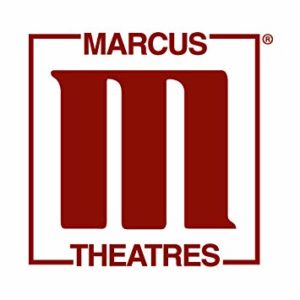STATION PARAMETERS

Below are links to KVSC’s Equal Employment Opportunity Report with the FCC
The FCC has updated the Public and Broadcasting. This a document to help the greater public understand broadcaster obligations and procedures.
- Call Sign: KVSC
- Licensee: St. Cloud State University
- Location: St. Cloud, Minnesota
- Frequency: 88.1 MHz
- Channel: 201
- Class: C2
- Studio Address: 27 Stewart Hall, SCSU, St. Cloud
- Transmitter Location: MN-Hwy 15, 3 kilometers southwest of St. Cloud, Stearns County
- Transmitter: Nautel GV10
- Transmitter Output Power (TPO): 4.8 kW (analog)
- Antenna Type: ERI RototillerX, LPX-6C, Six Sections, Circular Polarized, Non-Directional
- Effective Radiated Power (ERP): 16.5 kW (analog)
- Height of Radiation Center Above Ground (HAG): 129 meters
- Height of Radiation Center Above Average Terrain (HAAT): 136 meters
- Aural STL Call Sign: WLJ-487
- RPU Frequency: 170.15 MHz
TRANSMITTER
The KVSC Air Chain
- Aural STL: Moseley Starlink SL9003Q
- Audio Processing/Stereo Generator: Omnia.9
- Exciter: Nautel Integral
- Transmitter: Nautel GV10
KVSC STUDIOS
KVSC-FM is located in Stewart Hall on the campus of St. Cloud State University. The current facility was built in 1989 as part of a major renovation to the building. KVSC features (8) studio spaces including; the on-air master control studio, news studio, forum studio, (2) production studios, and a multitrack recording studio with a 20 X 25 performance space and vocal booth. All of the studios are linked to on-air control allowing for broadcast capability. Another unique feature is a connection between the multitrack recording studio and the recently renovated Kimberly Ritsche Auditorium. This 900 seat auditorium has been the site of several live broadcasts from political debates to sold out concerts. KVSC also has remote broadcast capabilities including Marti RPU systems, phone hybrid equipment, as well as a fiber optic audio link to the National Hockey Center, home of the Division I SCSU Husky Hockey team.
Digital Audio Technology: KVSC uses ENCO, a digital audio system for on-air playback of station promos, PSA’s, underwriters, ID’s, news, features and music produced at the station. The system stores digital audio on high capacity hard drives and is networked through out the facility for production and on-air access.
State Services for the Blind/Radio Talking Book Subcarrier: A 67kHz FM subcarrier is used for the “Radio Talking Book” a reading service delivered via satellite from St. Paul, MN. for visually impaired persons in Minnesota. The State Services for the Blind provides special subcarrier recievers for qualified individuals to listen to the service. A live local segment called “Central Minnesota Audio Newspapers” is broadcast for two hours each day by volunteer readers featuring the daily St. Cloud newspaper as well as area weekly papers. The KVSC Newsbooth studio is designed as an automated subcarrier broadcast studio for this purpose. For information on volunteer opportunities for The Radio Talking Book contact the station.
LONG RANGE LISTENING
KVSC broadcasts from St. Cloud, Minnesota at 88.1 MHz with an effective radiated power of 16,500 watts. Our signal is vertically polarized and broadcast in HD. We often hear from listeners in the Twin Cities and other distant places asking how they might improve the reception of KVSC.
Often times people discover KVSC in the car but back at home it doesn’t come in. This is common because like KVSC’s transmission antenna, most car radio antennas are vertically polarized. This combined with the car antenna being free from obstruction makes your car a good place to tune in!
By the way, KVSC’s signal is far stronger towards the Twin Cities from St. Cloud then to the North. On Interstate 94, for example, the signal tends to start fading near Albany going Northwest versus Maple Grove going Southeast.
To see a map of our idealized coverage area, click here.
The Antenna: The antenna is the most important part of a radio receiver. When setting up an antenna it is important to know that KVSC’s signal, unlike most FM stations, is vertically polarized. This means that for best reception your antenna should also be vertically polarized. For vertical polarization your antenna element(s) must be aligned vertically with the ground, like a common car antenna. This is the opposite of how a common rooftop TV antenna is mounted. Speaking of rooftop TV antennas, they often work quite well for FM radio (VHF type, not UHF). They can be modified for vertical polarization by removing the mounting bracket and drilling new holes. One good, and inexpensive, outdoor antenna for FM is the Model 15-2163 or the 15-2164 FM antennas from Radio Shack. Of course, don’t forget antennas like the 15-2163, 15-2164, and most TV antennas are directional so make sure you point your antenna towards St. Cloud, the elements should all be in a straight line behind one another. Radio Shack also makes a good line of indoor antennas, some that are powered for better reception, which is something to check out for apartments and easier application. If you live in a house with an attic outdoor antennas often work quite well, look a lot better, and are far safer mounted in the attic. Lastly, make sure you use a short run of high quality coax cable with good (and as few as possible) connections! For indoor antennas try those basic “T” wire dipole antennas, or amplified indoor antennas. Always try positioning indoor antennas in a variety of fashions as many have directional characteristics.
The Receiver: A good receiver can make a big difference in FM reception as well. A good component tuner such as a Denon or Carver is ideal. An excellent portable radio for long range FM reception is the GE SuperRadio III. Two others worth mentioning are the Sangean DT-200VX and the Sony SRF-59.
The Disclaimer: Antenna installation can be dangerous. Use caution or hire a professional if you intend to mount an outdoor antenna above ground level. Lightning can destory equipment, start fires, or cause personal injury or death, you must use proper grounding for ANY outdoor antenna, check with your dealer for further information on proper lighting protection.
The information provided on this page is only for informational purposes. The author, KVSC-FM, and/or St. Cloud State University are not liable for any damages to you or your equipment.



















